 Politics
Politics  Politics
Politics  Weird Stuff
Weird Stuff 10 Eggs-traordinarily Odd Eggs
 History
History 10 Desperate Last Stands That Ended in Victory
 Animals
Animals Ten Times It Rained Animals (Yes, Animals)
 Mysteries
Mysteries 10 Devastating Missing Child Cases That Remain Unsolved
 Creepy
Creepy 10 Scary Tales from the Middle Ages That’ll Keep You up at Night
 Humans
Humans 10 One-of-a-kind People the World Said Goodbye to in July 2024
 Movies and TV
Movies and TV 10 Holiday Movies Released at Odd Times of the Year
 Politics
Politics 10 Countries Where Religion and Politics Are Inseparable
 Weird Stuff
Weird Stuff 10 Freaky Times When Famous Body Parts Were Stolen
 Politics
Politics The 10 Most Bizarre Presidential Elections in Human History
 Weird Stuff
Weird Stuff 10 Eggs-traordinarily Odd Eggs
 History
History 10 Desperate Last Stands That Ended in Victory
Who's Behind Listverse?

Jamie Frater
Head Editor
Jamie founded Listverse due to an insatiable desire to share fascinating, obscure, and bizarre facts. He has been a guest speaker on numerous national radio and television stations and is a five time published author.
More About Us Animals
Animals Ten Times It Rained Animals (Yes, Animals)
 Mysteries
Mysteries 10 Devastating Missing Child Cases That Remain Unsolved
 Creepy
Creepy 10 Scary Tales from the Middle Ages That’ll Keep You up at Night
 Humans
Humans 10 One-of-a-kind People the World Said Goodbye to in July 2024
 Movies and TV
Movies and TV 10 Holiday Movies Released at Odd Times of the Year
 Politics
Politics 10 Countries Where Religion and Politics Are Inseparable
 Weird Stuff
Weird Stuff 10 Freaky Times When Famous Body Parts Were Stolen
10 Absolutely Terrifying Diseases You Might Have Without Knowing It
[Please note that this list is entirely false and filled with foolishness. Happy April Fools’ Day!]
10Digestive Entero Auto-Deliquescence
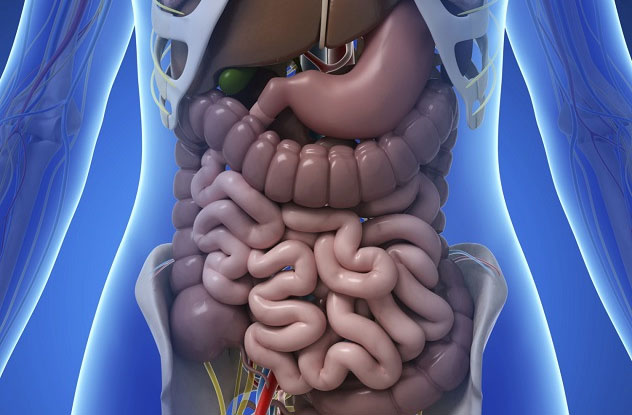
The human body’s digestive juices are incredibly strong. Isolated from the body, gastric acid would be powerful enough to eat through solid wood, and only the stomach’s unique structure keeps you from digesting yourself. Mucus protects your cells, and the cells also produce alkaline fluid, which neutralizes acids that come too close. If the acid manages to get past these defenses, you may suffer from a peptic ulcer.
As painful as ulcers are, they usually aren’t too dangerous because, again, your stomach and intestines have some defenses against gastric acid. Other parts of the body aren’t so lucky. If your acid backs up unpredictably through digestive vessels, such as the bile duct or cystic duct, you’ll get hit with digestive entero auto-deliquescence, in which your own body’s juices dissolve your internal organs.
One of the particularly troubling elements of the condition is the lack of symptoms before the rapid onset of organ failure. Though the stomach and the esophagus respond to excess acid by sending your brain signals of sharp pain, many lesser ducts connected to the digestive tract have a totally different type of nerve. You have no normal way to detect the presence of acid in these passages until they suddenly deliver their corrosive contents. The acid then often enters the large intestine, but it may also (and much more seriously) enter the gallbladder or even the liver, resulting in unconsciousness followed by swift death.
People structurally weak in their anatomical core have a higher risk of digestive entero auto-deliquescence. While in a sitting position, try bending forward so your head touches your legs halfway between your hips and your knees. Attempt to relax your abdominal muscles, and then touch your abdomen just below the ribcage. If this area stays rigid with no effort, you are not especially vulnerable.
9Peabody’s Diminution

Ever had a really bad migraine? Is your favorite baseball cap a little looser than it used to be? If you touch your earlobe with your thumb, does your pinky finger reach the outside edge of your opposite eye? If so, you might be experiencing the beginnings of a dangerous malady—Peabody’s Diminution.
Stop for a minute and think of all the radiation flying around the world today. These days, radios are in everything: cell phones, GPS units, microwave ovens . . . even clock-radios. And there’s ample evidence that radio waves are the evil guiding force behind a slow-acting malady that’s taking the globe by (silent) storm.
The first sufferer was a Mr. Whittaker Peabody, an early test subject of Thomas Edison’s. When radio waves were first discovered, Edison (known for a bit of cruelty in his experiments) picked one man to test the effects of the waves on. After several years of direct exposure to the skull, Mr. Peabody’s head began to shrink. He reported crippling migraines and excruciating pain. He soon left Edison’s employ, but the effects continued until his head was about the size of his fist.
All photos and records of the tests have been suppressed by the government, doubtless part of some mind control scheme. The above is probably the only one in existence and has held its terrible secret all these years. We only learned of it through the gracious cooperation of the Peabody estate, although they will certainly face repercussions for allowing us to publish the story and the photo.
8Adulescens Inferno
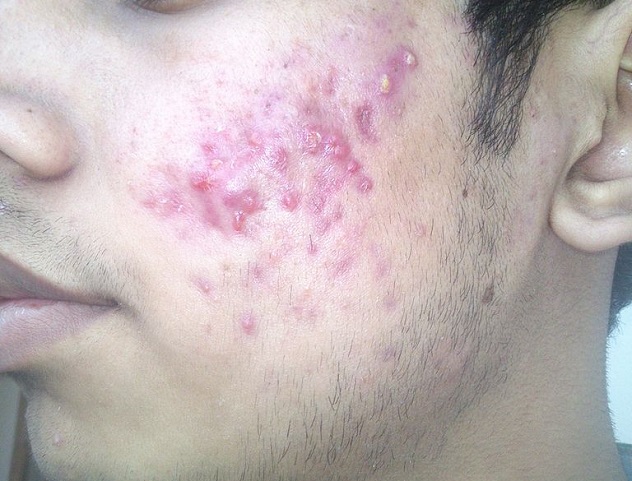
Acne is a normal part of growing up. Eight out of ten teens and preteens do battle with blackheads and pimples on a daily basis. While the cause isn’t fully understood, hormones and bacteria definitely play a key role. But there’s also adulescens inferno. First discovered in 1988 in a small village outside La Salina, Colombia, this highly aggressive retrovirus is a teenager’s worst nightmare. Adulescens inferno makes itself at home in the epidermis, conquering skin cell after skin cell. As it dominates the derma, it causes an eruption of highly contagious acne, often covering whole portions of the face.
So what’s the big deal, you ask? Well, Adulescens inferno wouldn’t be so bad if it stayed on the skin like normal acne . . . but it doesn’t. In almost 87 percent of documented cases, the virus abandons the derma and works its way deeper into the body. Able to move at sickening speeds, the retrovirus attacks muscles in the cheeks, nose, throat, and mouth. Basically, that means victims have acne growing inside their tongues. And since these zits are protected from creams, medications, and pimple-popping fingers, they can swell to enormous sizes. Left unchecked, Adulescens inferno can cause serious facial deformities, trouble swallowing, and eventual suffocation.
Although the virus seemingly disappeared during the 2000s, it reared its ugly whitehead in early 2013, claiming the life of a high school sophomore in Odessa, Texas. Unfortunately, while the disease is curable with immediate treatment, most victims aren’t aware they’ve contracted Adulescens inferno until it’s moved into the terminal stage. After all, its first and most obvious symptom is a sudden and rather deceptive onset of scaly red skin and slime-filled pustules. However, if the flare-up coincides with the appearance abnormal protuberances inside the mouth, nose, or along the tongue, chances are good things are about to get gross. At the very least, nobody is going to ask you out to prom.
7Pulmonary Lenticellular Ichthyosis
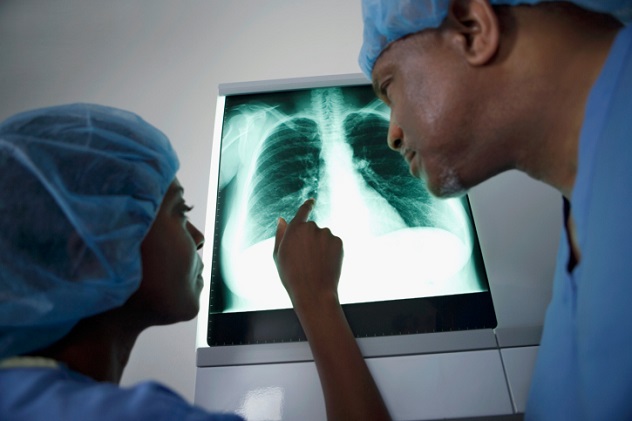
Human lungs are composed of a mass of spongy tissue that’s designed to be extremely flexible. The inner tissue of your lungs is made of a sheet of wrinkled cells that folds in on itself hundreds of times. If you could stretch it out flat, it would cover an area about the size of a three-piece suit. It’s designed that way to maximize the surface area that air can hit, allowing you to pull in more oxygen with every breath.
Sometimes, though, that flexible tissue doesn’t behave the way it should. In the years since the first case was observed in 1983, we’ve been seeing a rapidly increasing number of cases of pulmonary lenticellular ichthyosis—commonly referred to as “lung bark.” It happens when the outer layer of tissue on the lungs scabs over and hardens, forming a shell similar to the bark of the tree. And “similar” is an understatement—the hardened lung tissue actually has a mineral profile that’s 86 percent similar to the bark of the common beech tree.
The problem is, this disease is nearly impossible to diagnose without an autopsy. It presents no external symptoms, and the only time we ever see it is in cases where an autopsy is ordered for a different reason, such as for the victim of a homicide. But the numbers are striking—53 percent of autopsies ordered in the past decade have revealed pulmonary lenticellular ichthyosis. In one study, the lung bark was so strong it couldn’t even be cracked with a hammer. And in what you might call an ironic twist, cigarette smokers appear to be immune to whatever causes lung bark, leading some to believe that it might be caused by a bacteria that’s highly susceptible to carbon monoxide—such as the flesh-eating genus of Psilii nicagei.
6Sudden Onset Dental Collapse
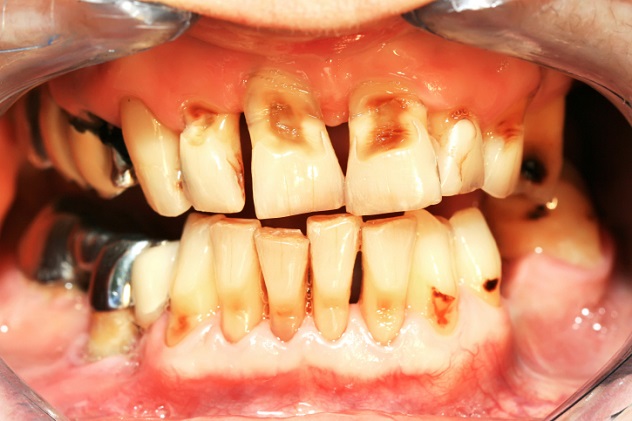
In 1936, Joyce Merrick was eating lunch at a diner when she bit down on something hard. It turned out to be a tooth. Touching her mouth to find which one was missing, she discovered that all of her teeth felt loose and wobbly. Another one came away in her hand when she touched it. In the space of about five minutes, all but two of her remaining teeth had fallen out. Doctors determined that the nerves inside her teeth had all died, and blood had ceased flowing to the surrounding tissues, leaving them weak and unstable.
What made this case so strange, apart from the rapid onset, is that in the months leading up to it, Merrick had had a series of dreams apparently predicting the event. In some her teeth had felt wobbly, and fallen out in rapid succession, while in others they were incredibly brittle, and crumbled in her mouth.
Since the Merrick case, multiple other victims of sudden onset dental collapse have been studied. All of them reported similar dreams, as well as occasional prickling sensations in their gums. Although not widely understood, the prevailing theory is that, the neurological system being so closely connected, nerve death in the mouth directly impacts the prefrontal cortex (the area of the brain responsible for dreaming). Certainly there is a link between dreams of clumps of hair falling out and late-life thinning hair or baldness in women, also believed to have a neurological cause. (In men, baldness is not considered pathological.)
In the early 1980s, victims of sudden onset dental collapse lobbied the US government to fund a public awareness campaign, encouraging those experiencing “teeth falling out” dreams and prickling gums to see their doctor immediately, but as the condition is so rare, it was felt the costs could not be justified.
5 Credula Cerebrum Morbo

Credulua cerebrum morbo is a degenerative brain disease caused by the mendax virus, and it’s seen a curious spike in number of cases recently. It’s a highly infectious disease, affecting all age groups, genders, and ethnic groups without discrimination. Perhaps the most unfortunate thing about this disease is that the early onset symptoms are often considered so minor that the affected person often assumes nothing is wrong until the disease is too advanced to treat. These symptoms include irritated eyes, blurred vision, back and neck pain, headaches, and fatigue. However, if left unchecked, the virus attacks the neurons in the brain, and over an extended period of time, it can lead to decreased concentration; forgetfulness; failure to recognize familiar people, places, or things; and even occasional explosive incontinence. Eventually, the virus destroys so much of the brain that even organ function begins to shut down, resulting in death and possibly even more incontinence.
Unfortunately, there is no known cure. Treatment consists more of prolonging the inevitable, rather than eradicating the disease. It’s a fact that every person diagnosed with credula cerebrum morbo will die at some point in their lives. It’s an unpredictable killer and has been known to run its course in mere months or stretch out and make victims suffer sometimes as long as another 70 years. If you are experiencing any of the early warning signs, you’d do well to get yourself checked out.
4Dissociative Unipolar Hypersensitivity

Have you ever tried to tickle yourself? It doesn’t really work, does it? That is because our somatosensory system is designed to treat external stimuli—those coming from other people and things—very differently from any physical stimulation we give our own selves.
This is a fundamentally necessary setup. Think about it: If your body treated your own touch the same way it treats other people’s, you’d be unable to accurately distinguish between the two. More than that, you’d suffer from a debilitating state of constant sensory overstimulation; simply having hair would feel like something’s always pressing against your scalp, your tongue would trigger a gag reflex within your own mouth, and your very skin would give you a sensation of being wrapped in plastic.
So what happens when this intricate mechanism fails? As it turns out, results range from mild and almost comical to completely crippling. The umbrella name for this range of symptoms is Dissociative Unipolar Hypersensitivity. People with a weak form of it may, for example, pinch themselves and instead feel like they’ve been tickled, or accidentally cut a finger but experience a “burning sensation.” Those on the more serious end of the spectrum may find themselves recoiling in pain while scratching their forehead and generally being entirely incapable of telling physical sensations apart. Current estimates suggest that as many as 27 percent of the population exhibit at least some symptoms. This puts the total number of afflicted people worldwide at over 1.9 billion. This means that you have a one-in-four chance of being affected, without even having noticed it.
One surefire method to test for D.U.H. is pretty straightforward. Take a pen or permanent marker and use its sharp tip to gently scratch the back of your neck. Now do the same with the tip of your index finger. Ideally, the two sensations should be very easy to tell apart. If you have trouble doing so, you may at least be predisposed to the disorder. Do note that you should never self-diagnose, so for further examination, please consult your physician and ask them about D.U.H.
3Pineal Parasitic Infection
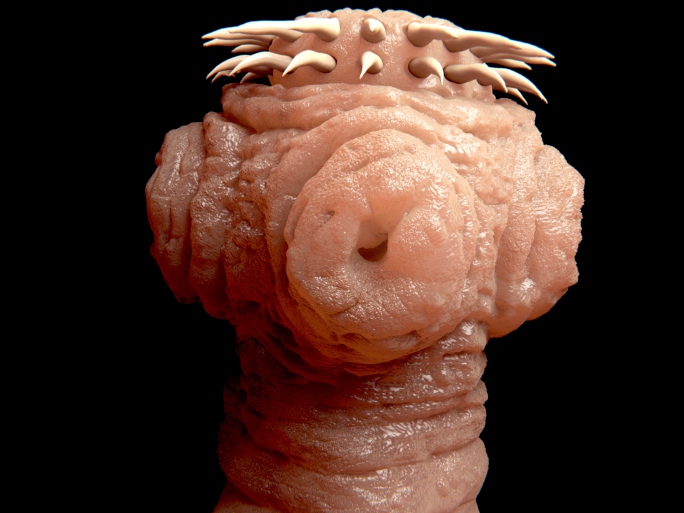
Back in the ‘70s, French doctors working on the Caribbean island of Redonda began to notice a series of unusual symptoms among their patients. The afflicted reported strong feelings of fatigue, increased appetite, and emotional and mental instability. Although they didn’t know it, the doctors were the first to detect the presence of the 20th century’s fastest-growing parasite, Cognomen sciencii, or the razor-backed squareworm.
Originally affecting sheep and some species of petrel, the squareworm seems to have made the jump to humans at some point in the late ‘50s, but remained undetected for years, primarily because infection remained relatively rare until the early 2000s. Infection is characterized by unexplained tiredness, mood swings, rectal discharge, and frequent urination—sometimes as often as several times a day.
Perhaps the most unusual feature of the squareworm is its ability to influence host behavior through the production of endorphins and other emotion-regulating peptides, which the worm naturally excretes. This allows the parasite to alter its environment to suit itself—for example, by releasing endorphins after the host has consumed a meal high in salt or fat, the squareworm encourages the consumption of similar meals. Similarly, if agitated by excess movement, the squareworm can release the stress-related chemical Neuropeptide Y, encouraging the adoption of a sedentary lifestyle.
Although previously rare, squareworm infection rates have grown exponentially during the 2000s and continue to do so to this day. Many osteopaths now link this growth rate to changing dietary patterns, particularly the rise of popular gluten-free diets. As well as being delicious, frequent gluten consumption is fatal to squareworms, which are severely intolerant of it. So, if you want to avoid infection, make sure you get plenty of gluten!
2Sudden Onset Gluten Intolerance

Could gluten kill you? Seven out of seven doctors now believe it could and will, at any point, without warning. The protein composite has been linked to everything from heart attacks to ocular scaling, sudden cranial discharge, and pancreatic verrucas. Now, a holistic team of scientists, houngans, and dietitians working out of Saskatchewan’s Institute for Logorrheic Aphasia say that these seemingly unrelated effects may in fact constitute part of a larger syndrome—sudden onset gluten intolerance.
Scienticians say SOGI is becoming more and more common and may already be at epidemic levels—and the symptoms may actually be worsening in response to increased consumption. New maladies believed to be linked to SOGI include ambivalence, spasms, brittle bones, urethral bleeding, ingrowing teeth, wandering cartilage, uncontrolled gall bladder replication, miasma, macrobiotic psychosis, spontaneous combustion of the nervous system, breezes, gum necrosis, tropical hypothermia, verbal hallucinations, and skin disorders.
In a statement earlier this year, the Senior UN Commissioner on Disease, Helen Hunt, advised that gluten be banned completely from human consumption. This measure remains controversial, but has already been implemented in Guam, Micronesia, and New York. For those living elsewhere, the risk of SOGI can be reduced through frequent exercise, Obeah, and a carefully monitored fluid intake.
1Hypochondriasis

Hypochondriasis (more commonly known as “hypochondria”) is easily the best known condition on this list, and it’s also the most prevalent. Sufferers may experience no physical malady, but they nonetheless go through something even worse: the misconception that they do indeed have an actual serious illness. Hypochondriacs often find themselves perusing collections of obscure disorders and even conducting bizarre self-diagnosis tests that violate common sense.
Originally, doctors believed that hypochondria was a response to natural low self-confidence or a consequence of observing actual disease. But with the rise of the Internet and the huge flood of information it brings, social scientists say many people have just developed an unhealthy obsession with random morbid stuff. Plus, it’s simply fun to imagine that you might have an unexpected and crazy fate ahead of you . . . rather than just acknowledging that you’re going to die due to your sedentary lifestyle of sitting in front of a computer all the time.
Most recently, economists and taxidermists have concluded that hypochondria is but a single facet of a larger disorder: extreme gullibility. Sufferers of this disorder (“suckers”) tend to believe anything they hear—or read. Anything that is linked to an external resource appears legitimate to the gullible, even when the resource is completely unreliable, contains no supporting facts, or even consists of total gibberish.
Though no instant cure exists for either hypochondria or credulity, few doctors suggest abandoning all hope. Many sufferers have managed to turn their lives around by treating themselves with regular doses of skepticism (currently not regulated by the FDA). If something seems unlikely, or even just really interesting, read up further on it from every source you can find. You may discover it isn’t true at all. Or you’ll find it is true, and you’ll learn a ton more about it, which is still a good use of your time. In fact, it’s the second best way you can use your time, right after insulating your home against rabid space bats.
Vastest Riffles would like to thank his parents (the Listverse staff and an anagram generator) for creating him and Kier Harris and Nolan Moore for helping out with this list.








